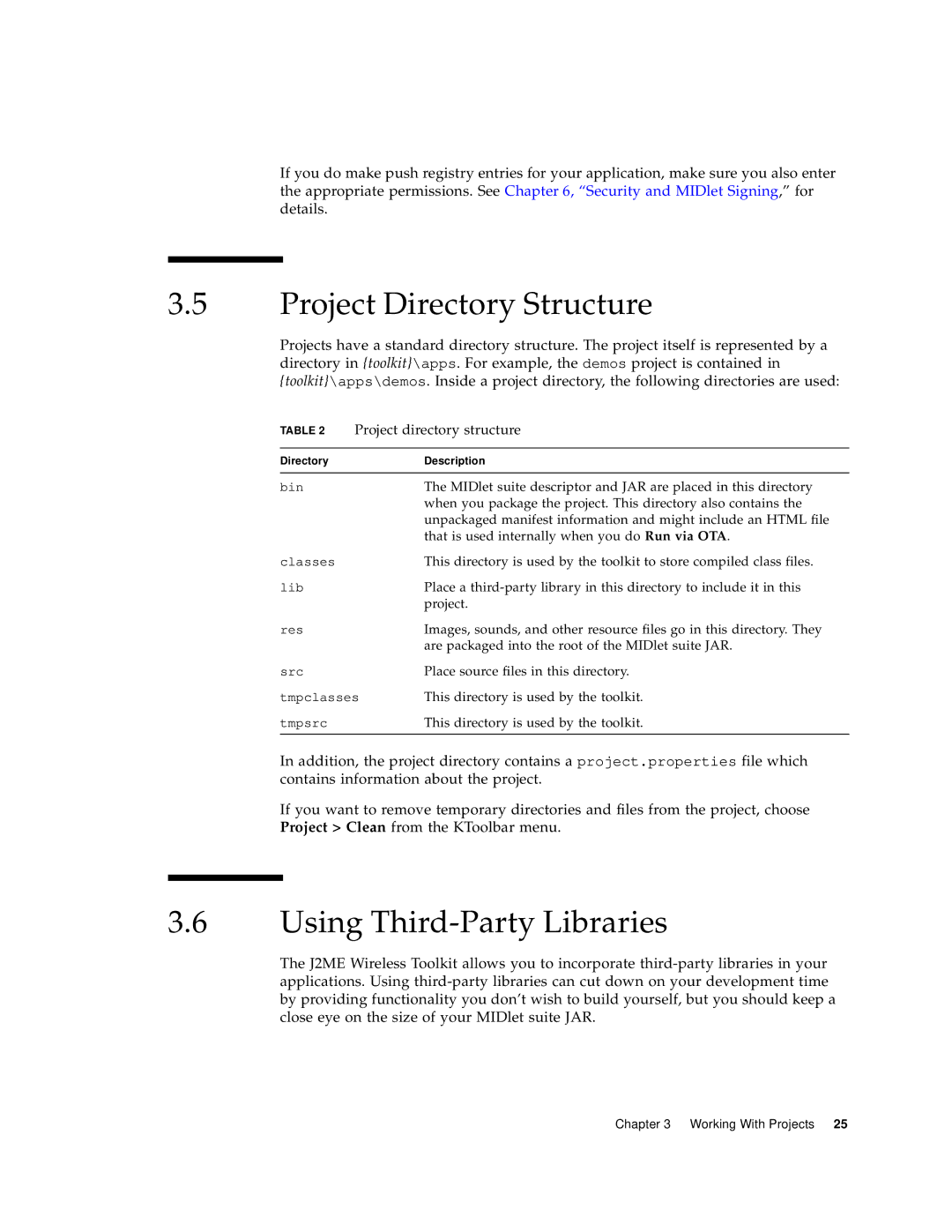
If you do make push registry entries for your application, make sure you also enter the appropriate permissions. See Chapter 6, “Security and MIDlet Signing,” for details.
3.5Project Directory Structure
Projects have a standard directory structure. The project itself is represented by a directory in {toolkit}\apps. For example, the demos project is contained in {toolkit}\apps\demos. Inside a project directory, the following directories are used:
TABLE 2 | Project directory structure | |
|
|
|
Directory |
| Description |
|
|
|
bin |
| The MIDlet suite descriptor and JAR are placed in this directory |
|
| when you package the project. This directory also contains the |
|
| unpackaged manifest information and might include an HTML file |
|
| that is used internally when you do Run via OTA. |
classes |
| This directory is used by the toolkit to store compiled class files. |
lib |
| Place a |
|
| project. |
res |
| Images, sounds, and other resource files go in this directory. They |
|
| are packaged into the root of the MIDlet suite JAR. |
src |
| Place source files in this directory. |
tmpclasses | This directory is used by the toolkit. | |
tmpsrc |
| This directory is used by the toolkit. |
|
|
|
In addition, the project directory contains a project.properties file which contains information about the project.
If you want to remove temporary directories and files from the project, choose Project > Clean from the KToolbar menu.
3.6Using Third-Party Libraries
The J2ME Wireless Toolkit allows you to incorporate
Chapter 3 Working With Projects 25
